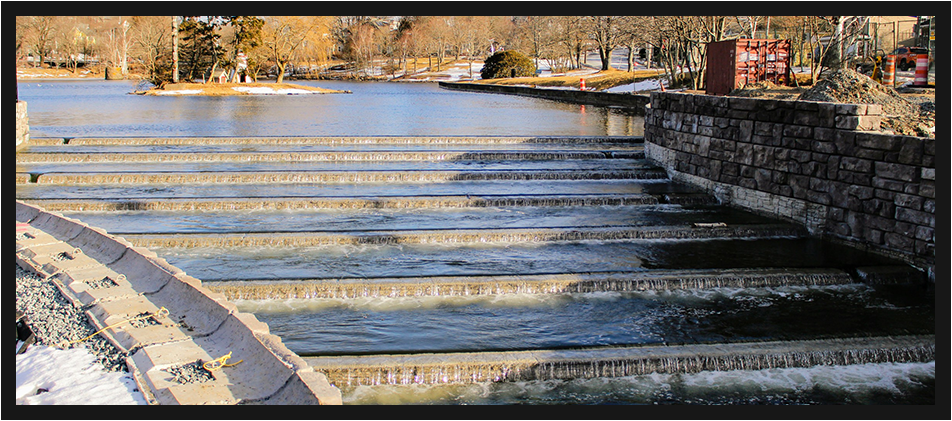Sullivan’s Pond Storm water Replacement
CBCL Limited

» Scope of Project
CBCL Limited was engaged by Halifax Water to find a solution to either rehabilitate (install a liner) or replace an existing 2700mm diameter corrugated steel pipe (CSP) that conveys flows from Sullivan’s Pond to Dartmouth Cove.
» Execution
Hydrologic Modelling revealed that rehabilitation would significantly reduce the capacity of the pipe, and with Climate Change accounted for, the risk of flooding within the community would be significantly increased. Replacement was, therefore, deemed necessary. A study to look at options for replacement was then performed.
» Project Highlights
The existing CSP was installed in 1972, after flooding occurred during Hurricane Beth in 1971. The pipe enclosed a stream known as Sawmill Creek to protect the community from flooding, and to enable development that was being performed during that period. Sullivan’s Pond was part of the historic Shubenacadie Canal/ Marine Railway system built in the mid-nineteenth century, therefore, there are historically significant artifacts present in the area.
There is a 16 metre drop between Sullivan’s Pond and Dartmouth Cove, over a length of approximately 600 metres. The steel pipe, laid at a relatively steep gradient without fish baffles has blocked fish passage between Dartmouth Cove and the upstream lakes and streams since installation. Replacement of this pipe has provided an opportunity to daylight portions of the former stream and provide fish passage in a larger conduit that will be able to safely convey future storms without increasing flood risks. The CBCL study titled “Sullivan’s Pond Storm Sewer Renewal” is publically available on Halifax Water’s website.
The selected option is a combination of sections of open channel with retaining walls, open channel with slopes, three-sided box culverts with gratings, closed box culverts, and an open channel with precast concrete bridge sections spanning Ochterloney Street.
Extensive fish passage design was executed by the CBCL/Thaumas Consultants team, in consultation with the Department of Fisheries and Oceans. The system was designed to pass a future design flow some 50% higher than the current system, while allowing fish passage for the weakest swimmer: in this case alewives, or more commonly called Gaspereau. When completed, the 600 metre long fishway will be one of the longest in existence anywhere.
CBCL Limited completed detailed design of Phase 1 in March of 2017. Construction began in the summer of 2017, and will continue until the end of the year.


